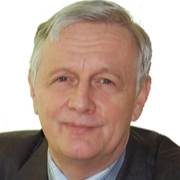
Roman Tkachenko
Work place: Lviv Polytechnic National University, Lviv, 70913, Ukraine
E-mail: zduriagina@ukr.net
Website:
Research Interests: Computer systems and computational processes, Artificial Intelligence, Neural Networks, Data Structures and Algorithms
Biography
Roman Tkachenko graduated from Lviv Polytechnic National University in 1972. He took his Ph.D. degree in 1984 and Dr. Sc. degree in 2000. The topic of his Dr. Sc. thesis was “Neural networks of direct propagation with non-iterative training”. He is currently working as a Head of the Publishing Information Technologies Department at Lviv Polytechnic National University, Lviv, Ukraine.
He has published more than 200 publications, including 12 patents for inventions, 3 tutorial. He is a developer of a new neural paradigm based on the Geometric Transformations Model, author of scientific research of high-speed intelligence technologies. His major research interests are neural and neural-fuzzy artificial intelligence means for Big Data tasks.
Professor Tkachenko is head of the scientific and technical projects in Ukraine and abroad on the development of artificial intelligence means based on the neural-like and neural-fuzzy structures.
Author Articles
The Combined Use of the Wiener Polynomial and SVM for Material Classification Task in Medical Implants Production
By Ivan Izonin Andriy Trostianchyn Zoia Duriagina Roman Tkachenko Tetiana Tepla Nataliia Lotoshynska
DOI: https://doi.org/10.5815/ijisa.2018.09.05, Pub. Date: 8 Sep. 2018
This document presents two developed methods for solving the classification task of medical implant materials based on the compatible use of the Wiener Polynomial and SVM. The high accuracy of the proposed methodology for solving this task are experimentally confirmed. A comparison of the proposed methods with existing ones: Logistic Regression; Linear SVC; Random Forest; SVC (linear kernel); SVC (RBF kernel); Random Forest + Wiener Polynomial is carried out. The duration of training of all methods that described in work is investigated. The article presents the visualization of all method results for solving this task.
[...] Read more.Other Articles
Subscribe to receive issue release notifications and newsletters from MECS Press journals